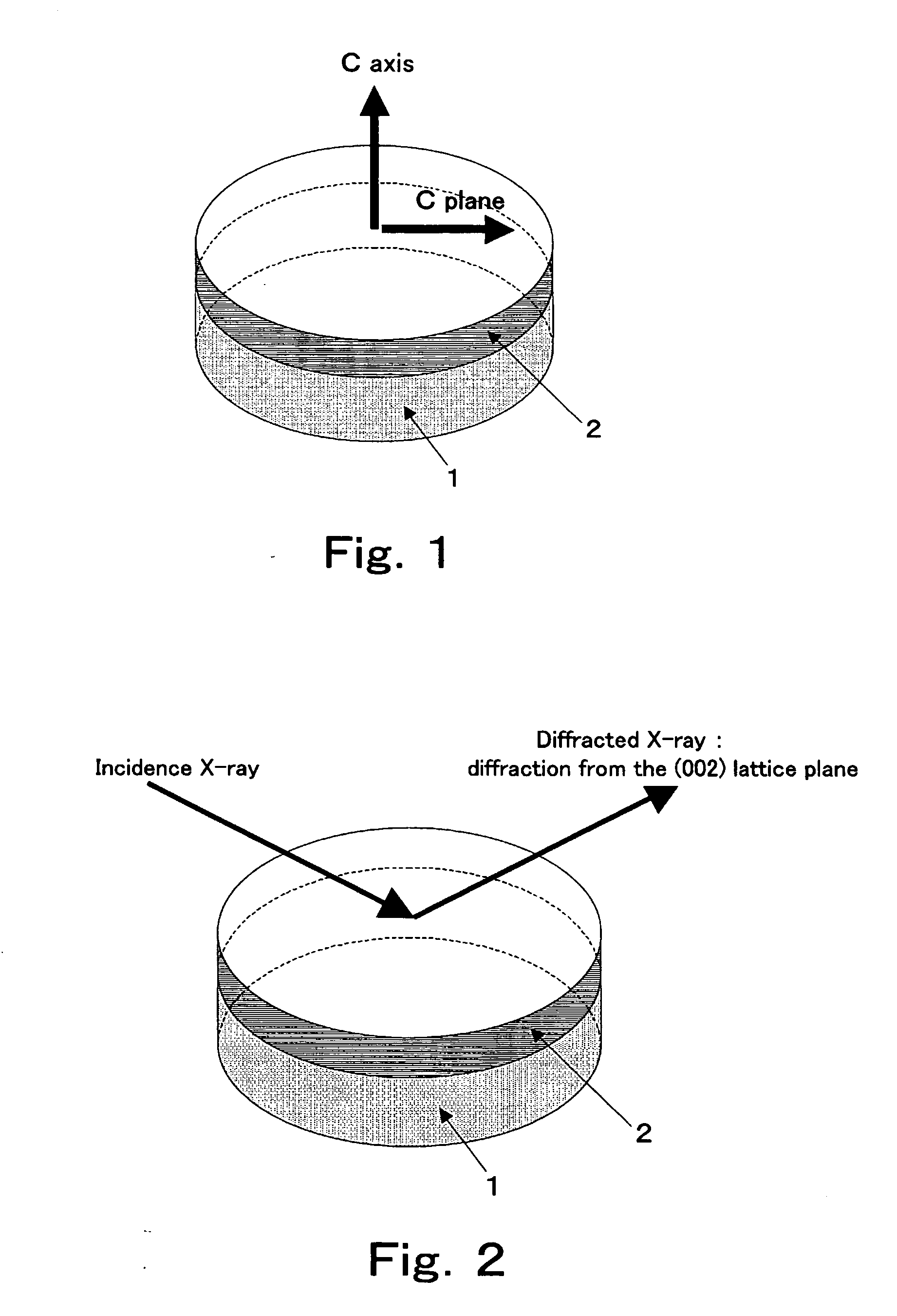Substrate for thin film formation, thin film substrate, and light-emitting device
a technology of thin film substrate and substrate, applied in the direction of chemically reactive gases, electrical devices, crystal growth process, etc., to achieve the effect of comparatively easy manufacturing and relatively easy manufacturing
- Summary
- Abstract
- Description
- Claims
- Application Information
AI Technical Summary
Benefits of technology
Problems solved by technology
Method used
Image
Examples
example 1
[0751] High-purity, submicron ceramic raw material powders used were aluminum nitride powder of grade “F” available from Tokuyama, Inc., silicon carbide powder of grade “OY-15” available from Yakushima Denko Co., Ltd., silicon nitride powder of grade “SN-E05” available from Ube Industries, Ltd., aluminum oxide powder of grade “AKP-30” available from Sumitomo Chemical Co., Ltd., partially stabilized zirconia powder of grade “TZ-3Y” containing 3 mol % of Y2O3 as a stabilization agent available from TOSOH CORP., zinc oxide of “first grade” available from Sakai Chemical Industry Co., Ltd., guaranteed magnesium oxide powder available from Kanto Kagaku, and beryllium oide powder and magnesium aluminate (MgAl2O4: spinel) powder both available from Kojundo Chemical Laboratory Co., Ltd. The purity was not less than 99 weight % except for partially stabilized zirconia. The oxygen content was 1.0 weight % in the aluminum nitride powder. 1.0% by weight of B4C powder and 1.0% by weight of carbon...
example 2
[0788] As for the crystallinity of the single-crystal thin film comprising as a main component at least one selected from gallium nitride, indium nitride and aluminum nitride and is formed directly on the aluminum nitride-based sintered compact substrate, the influence by the characteristics, such as the composition of the aluminum nitride-based sintered compact, the microstructure of the sintered compact, and the optical transmissivity, etc., was investigated.
[0789] As the raw material powder for sintered compact production used for the experiment the same high purity aluminum nitride powder [the grade “F” by Tokuyama Soda Co., Ltd. (present: Tokuyama, Inc.)] as those having been used in Example 1 was prepared.
[0790] The raw material powder is manufactured by the method of oxide reduction.
[0791] After additives, such as sintering aids, and blackening agents, etc., are suitably added to the raw material powder, it mixes by the ball mill with ethanol for 24 hours, and it was dried...
example 3
[0809] High purity aluminum nitride powder (the grade “H” available from Tokuyama, Inc.) was prepared as the raw material powder for producing an aluminum nitride-based sintered compact. This raw material powder was manufactured by the method of oxide reductionin. This raw material powder contains oxygen 1.3 weight % as impurities.
[0810] Added to this raw material powder were 3.3 volume % of Y2O3 powder, 4.02 volume % of Er2O3 powder, and 0.6 volume % by of CaCO3 powder on a CaO basis, and mixed with toluene and isopropyl alcohol by the ball mill for 24 hours, then an acrylic binder was added 12 weight parts to 100 weight parts of the powder raw materials, furthermore they were mixed for 12 hours and made into a paste, and the green sheets having three kinds of composition as thick as 0.75 mm by the doctor blade method were produced.
[0811] The green sheets were formed into square sheets of 35 mm×35 mm, to which circular through-holes having a diameter of 25 μm, 50 μm, 250 μm and 5...
PUM
| Property | Measurement | Unit |
|---|---|---|
| temperature | aaaaa | aaaaa |
| size | aaaaa | aaaaa |
| particle diameter | aaaaa | aaaaa |
Abstract
Description
Claims
Application Information
 Login to View More
Login to View More - R&D
- Intellectual Property
- Life Sciences
- Materials
- Tech Scout
- Unparalleled Data Quality
- Higher Quality Content
- 60% Fewer Hallucinations
Browse by: Latest US Patents, China's latest patents, Technical Efficacy Thesaurus, Application Domain, Technology Topic, Popular Technical Reports.
© 2025 PatSnap. All rights reserved.Legal|Privacy policy|Modern Slavery Act Transparency Statement|Sitemap|About US| Contact US: help@patsnap.com



